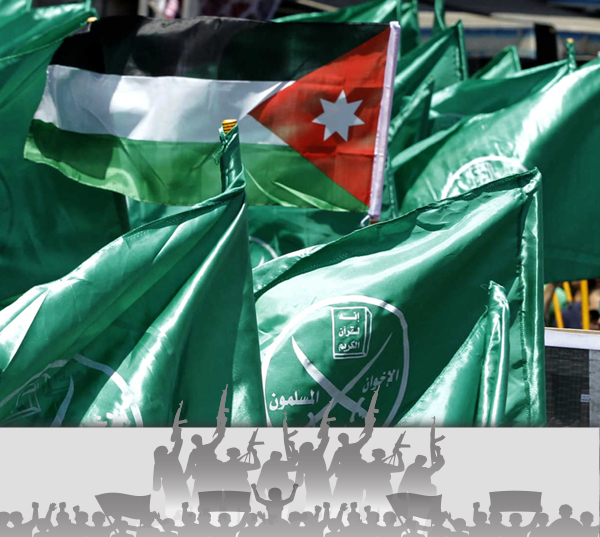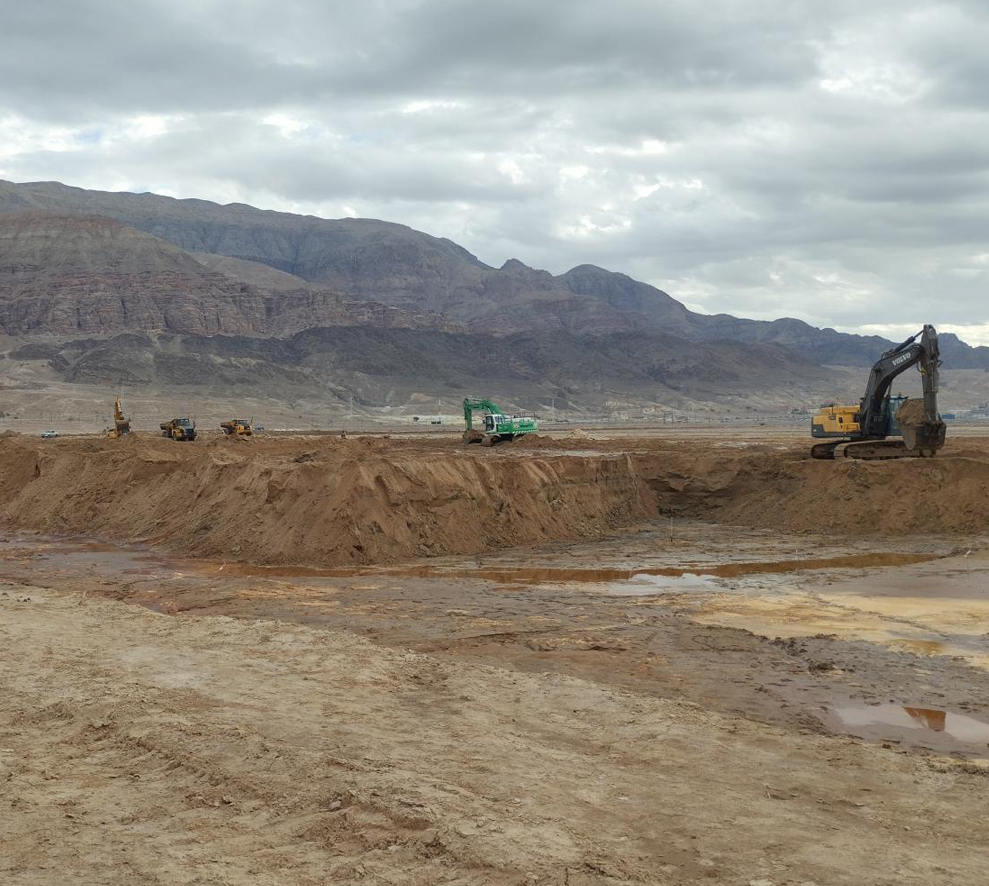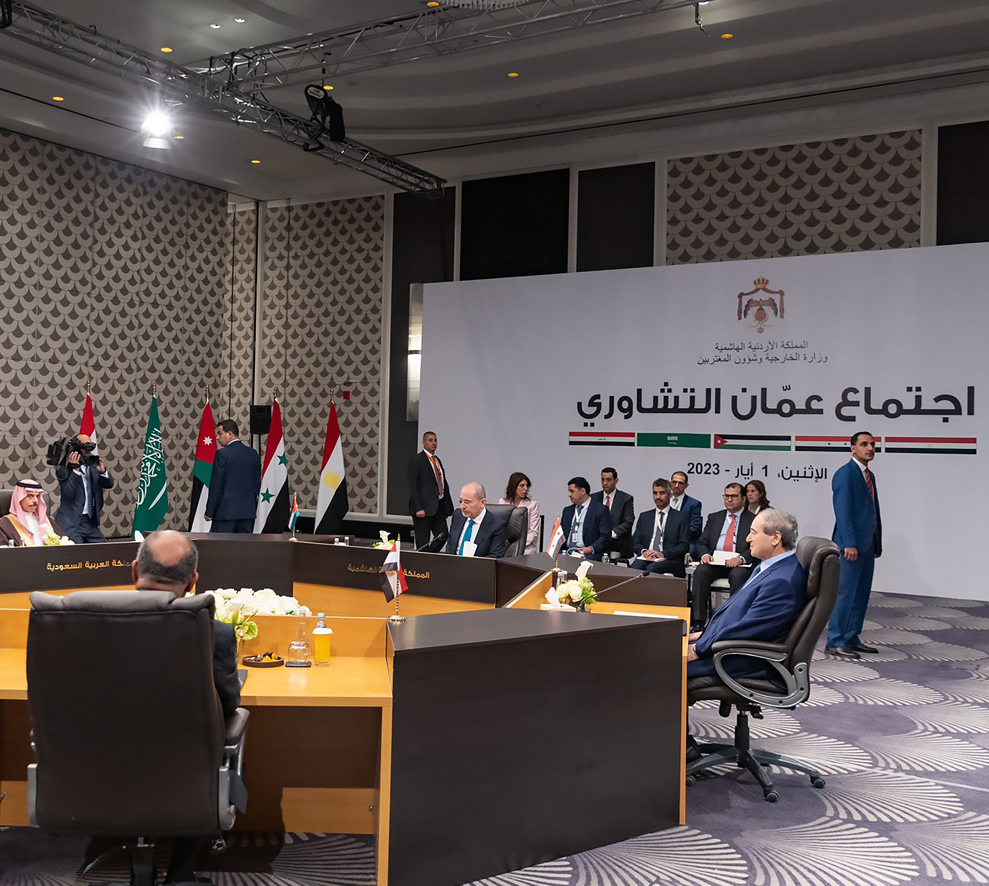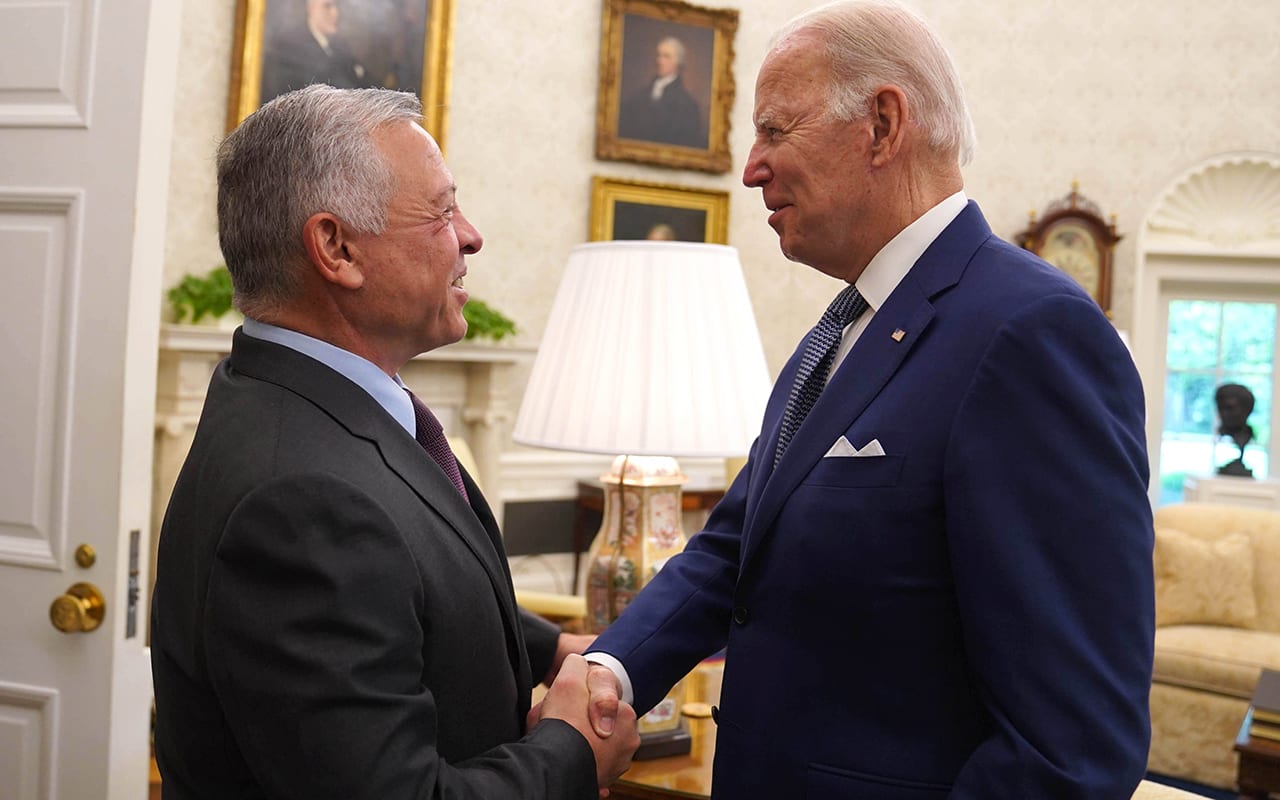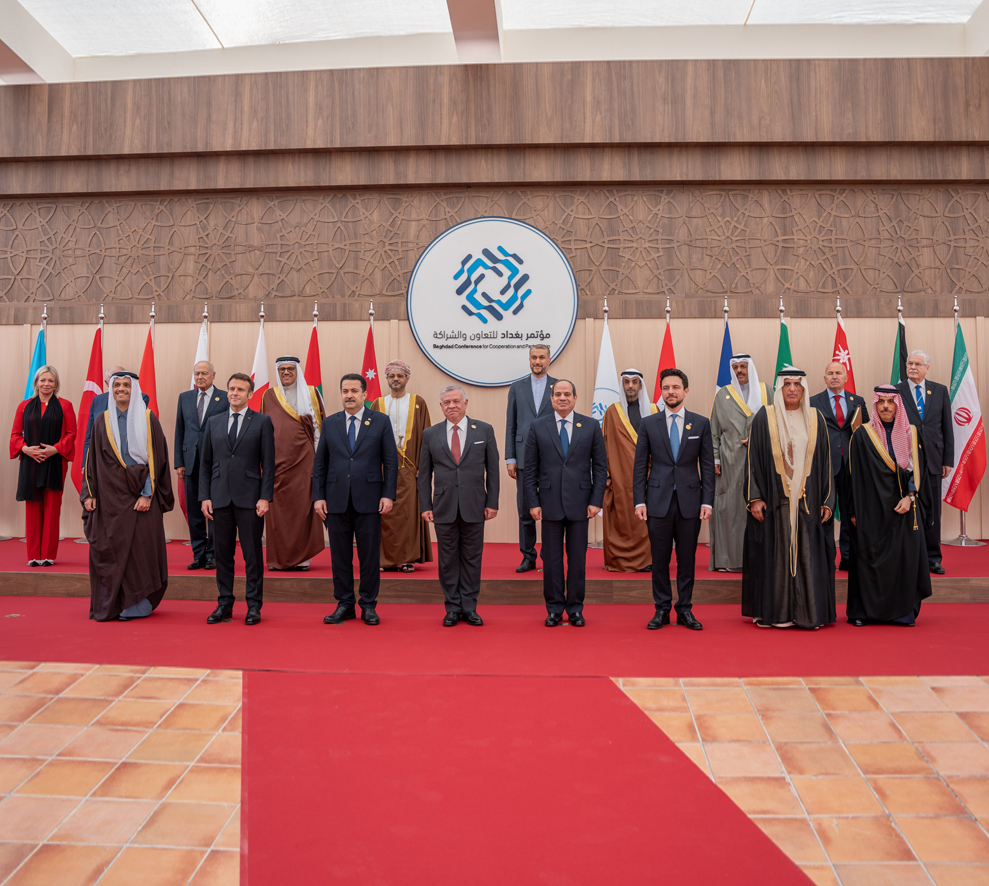This paper is a part of the series: Political Islam in Focus.
Introduction
To begin with, understanding and studying the Muslim Brotherhood pace in Jordan is faced with confusion and ambiguity, in spite of the big amount of rhetorical or mass media studies anticipations, which most of them focused on the historical path of the Muslim Brotherhood as a political and social movement, these studies did not go further to measure the Muslim Brotherhood's effect on the society's structure and concepts, or study the Muslim Brotherhood transformations within an integrated context of reasons and dimensions that affected the Muslim Brotherhood in terms of its functions, discourse, and programs.
In such regard, the "religion" represented the Muslim Brotherhood's content of work and the scope of its main influence in the 1940s and 1950s of the past century. But the Muslim Brotherhood later on gradually transformed in terms of the content and nature of discourse, it also developed in a hybrid confusing and ambiguous manner in terms of its pace, stands, and scope of work. Such development was difficult to be interpreted even for who studies the Muslim Brotherhood's rhetoric's in Jordan.
The Muslim Brotherhood transformed within a zig-zag pace, where it started as a Dawaa (call to embrace Islam) discourse into a political discourse. In this pace, the Muslim Brotherhood coupled the political considerations as a political party with the religious and social dimensions as an organization licensed to practice charity and Dawaa. Such transformation was reflected on the content of the Muslim Brotherhood's discourse which turned from a conventional breaching discourse into an extremist protesting one which can be described as "bargaining" with the society and the state. The foregoing affected the Muslim Brotherhood's religious and political understanding, which contradicts the Salafist, Moderate, Sufist, and Jihadist concepts sometimes, while citing from such concepts in other times.
The same is what we will attempt to address and shed more light thereto in the four parts of this study; especially in Part One, which was dedicated to be the methodological base introducing the rest of Parts within a Holistic Approach. The subject of the Muslim Brotherhood in Jordan would be studied within the historical contexts, starting from the constitution of the Muslim Brotherhood until the return of the democratic life in 1989. This subject would be studies via a number of sub-axis that will address the main landmarks in the Muslim Brotherhood's activity in Jordan within a sequenced historical frame, starting from the 1940s of the twentieth century, then the Muslim Brotherhood's activities in the 1950s, 1960s, 1970s, until the 1980s period, which was marked with the political, social, and economic transformations in Jordan 1989, where such period witnesses the climax of the Muslim Brotherhood activity and effect.
Charity Work as an Entrance to the Political Work
The activity of the so-called "political Islam" in Jordan synchronically started with finding the Muslim Brotherhood on November 19, 1945, orchestrated by Abdullatif Abu Qura, where the Muslim Brotherhood in Jordan was a branch of the mother group in Egypt, found by Hasan al-Banna 1928, Abu Qura was a member of the constitution board of the Muslim Brotherhood in Egypt. The license for the Muslim Brotherhood in Jordan to work was issued by the Jordanian prime ministry, published in al-Jazeera newspaper on February 8, 1946 as a charity and Dawaa association. The news said "the high prime ministry decided in its session held on January 9 to allow the noble Ismail Beik al-Balbesi and his brothers: Mr. Abdullatif Abu Qura, Ibrahim Jamoos, Rashed Drozeh, Qasim al-Amaari, and others".
Back then, the Muslim Brotherhood relations with King Abdullah I were friendly, this is because Jordan (which was an emirate then) was in a need for the rise of the charity and Dawaa work. King Abdullah I said "East Jordan Emirate need the Muslim Brotherhood's efforts". The king made a proposal to Abdeen to be appointed in the Jordanian government, in addition, Abdeen and al-Banna would be awarded the Bey title, but both apologized from accepting the offer. Al-Banna apology was that the informal work of the Islamic Dawaa is what is required the most for the Muslim Brotherhood's efforts [1].
At its onset, the Muslim Brotherhood focused on the religious Dawaa, charity, and social work. The same was what its published goals indicated as being "closer to a charity, or to a general Islamic body, concerned with the Islamic Dawaa, call for virtues and call off the vices" [2].
Accordingly, the Muslim Brotherhood had a support from the Jordanian state, as its moderate charity and Islamic activity conformed with the method and behavior of King Abdullah I, in addition to three main reasons for prince Abdullah's support of founding the Muslim Brotherhood:
First: the announced tendencies of the Muslim Brotherhood back then in terms of establishing schools and the public charity work, as well as other principles, conformed with prince Abdullah's tendencies.
Second: The Muslim Brotherhood's discourse, which supported King Abdullah I son of al-Husain.
Third: in spite of the intense political contend between prince Abdullah and king Faruq at that period, but prince Abdullah wanted to "take the benefit of the Muslim Brotherhood's experience and their alliance with Faruq in Egypt against the Liberal party of al-Wafd". [3]
Arguably, the most significant political event in the Middle East after the end of WW2 was the UN decision to divide Palestine on November 29, 1947, and the declaration of the state of Israel on May 14, 1948, the matter which caused the Arab-Israeli war to erupt in 1948, in addition to the systematic violence camping which Zionist groups, like Stern and Hagenah, practiced against the Arabs and the British in Palestine.
Such war had clear reflection on the Muslim Brotherhood, touching its leaderships (who were mostly merchants) besides the Muslim Brotherhood's role and structure of organization. This became clearer in the 1950s of the past century. [4].
Albeit the available rhetoric about the Muslim Brotherhood experience in Jordan during the 1948 war is scarce, scattered in interviews, memoirs, and writings, which were never free of exaggerations, but the Muslim Brotherhood participation in the military operations were limited to 100 volunteers, in addition to rise donations and aids.
What is certain for many researchers in the subject of the Muslim Brotherhood participation in the 1948 war, whether against the Zionist groups or the Israeli army, is that such participation was not of an affecting or active military significance, nor it changed the scale of power, despite the mass media exaggerations and propaganda -especially by the Egyptian Muslim Brotherhood- for the purpose of expanding recruitment campaigns, and gain the support of the public in order to achieve futuristic schemes.
The Preparation towards Political Transformation
In the middle of the 1950s, the signs of the Muslim Brotherhood transformation towards the political work appeared. The year 1954 witnessed establishing al-Kifah al-Islami (the Islamic Struggle) newspaper. In 1955, Muslim Brotherhood members participated in the protests which rejected Jordan joining Baghdad alliance. In 1956, 4 members of the Muslim Brotherhood joined the government, and gave the trust to Suleiman al-Nabulsi government back then. [5]
The Muslim Brotherhood's activity contradicted the role which it was founded for, where it had the support from King Abdullah I for being a movement active in charity, Dawaa, and instructional fields. This role in the 1950s is deemed a transformation in the Muslim Brotherhood's functions and discourse; when a candidate for the parliamentarian elections in 1950 called for a support from the Muslim Brotherhood, the group responded by saying "the Muslim Brotherhood is a religious group that aims to promote well-manners and strengthen the brotherly bonds between the Muslims, it has no relation to politics or organizations…..what the candidate's said is untrue. The Muslim Brotherhood calls its members and supporters to elect the good man" [6]
However, the big transformations which swept the Muslim Brotherhood's leaderships were only a factor of going towards the political and partisan work. Abdulrahman Khalifa succeeded Abdullatif Abu Qura late 1953, he created the position "the General Observer". In the same year, the Muslim Brotherhood constituted its articles of association similarly to the one of Egypt's Muslim Brotherhood. It should be mentioned that Jordan kept on deeming the Muslim Brotherhood a charity not a political party even after such changes. Therefore, the Muslim Brotherhood obtained the approval on its articles of association from the Jordanian prime ministry, presided by Tawfeeq Abu Huda, and it was enabled to expand for the aim of Dawaa, this included the public places, mosques, and other places.
In addition, the Muslim Brotherhood activity in the 1950s until the 1970s was always coupled with the motivation to compete the ideologically-contending political currents, specifically: the nationalists and the left-wing factions, who were -according to the rhetoric- supported by the Arabic ruling systems in Egypt and Syria, or by the sympathetic with the speeches of the Egyptian president; Jamal Abdul Nasser, and the Baathist regimes in Syria and Iraq.
Within such environment of political contend, and the intersection between the local and regional factors, the Muslim Brotherhood found an incubating environment in the Jordanian political ranks. Jordan's relations with the Muslim Brotherhood seemed stable due to the motivations of positions unity against the Baathist and nationalist parties which counter the Muslim Brotherhood in terms of ideology, and hiding a negative position against the Jordanian state and its political system [7]. This was what Mudhar Badran -former Jordanian prime minister- confirmed when he said "the hard security and political situations were, to a great extent, a normal result of the political interactions between the region's states, casting their effects on Jordan. We were targeted by the state of Union between Egypt and Syria. Our relations with the Egyptians were not well. The relation with Syria was blocked". [8]
On another hand, the Muslim Brotherhood found themselves in the context of a reconciliation with the Jordanian government in a time there the mother group in Egypt was in a dispute with Jamal Abdul Nasser. The Muslim Brotherhood of Jordan relations with the Jordanian state was reflected, at that time, on the Muslim Brotherhood's orientations, decisions, and stances. The Muslim Brotherhood founded the pragmatic logic which still adopts until today. For instance: the stance the Muslim Brotherhood took towards al-Nabulsi government, only a year after giving the trust to the movement composed of nationalist and communist parties.
This means that the state, with its institutions, and the Muslim Brotherhood at that time had joint interests to work together. And that the state rewarded the Muslim Brotherhood with easing moving and organizing over the other political components.
Thus, the Dawaa and charity works in the 1940s until the end of the 1950s, after the Muslim Brotherhood was founded, carries the seeds of transforming towards the organizational political work, which became clearer at the beginning of the 1960s. the Muslim Brotherhood spent only a decade in the charity and Dawaa activities before it started to consider the political interests and benefits, the matter which was accompanied with transformations in the methodology and discourse.
In such context, we can notice that few documents, leaflets, studies, or reviews were issued by the Muslim Brotherhood to explain the reasons of such radical transformation, or to understand its objective reasons and justifications. Nevertheless, the regional and international changes since the 1960s had deepened the Muslim Brotherhood's experience in the political work, and opened the door wide loose to the activity and the increase of the Muslim Brotherhood significance in the Jordanian society.
The atmospheres amongst the Arabic states, charged with the political contend; and related to social transformations due to the economic and political changes resulted from the Arab-Israeli war 1949, the unity between the two banks of Jordan, the popularity of the leftist and nationalistic discourses, in addition to wider transformation in the international context which was accompanied with a recede of the British hegemony, rise of the USA, and the emergence of the Eastern Block led by the Soviet Union.
Then came the war of 1967, accompanied with a transformation in the Arabic concepts of the nationalism Abdul Nasser called for against the Islamic wake. This was the signs of the Islamic Tide beginning in the Arabic States, where issuing Hasan al-Banna's book "Landmarks on the Way" was a feature thereof, as the book is deemed to the top guidance for the current Islamic movement.
One of the 1967 war ramifications was that a new geopolitical and demographic reality was imposed on Egypt, Syria, and Jordan. Jordan was affected the most with the war results, where it witnessed waves of refugees influx with hundreds of thousands from the West Bank to East of Jordan, the matter which lead to counterbalance the demography on River Jordan's banks.
Such objective circumstances contributed in preparing a fertile environment for the political Islam groups, the with hundreds of thousands was no exception. In the same time, many educated youths were affiliated to the with hundreds of thousands, which relations increased with the mother group in Egypt.
.jpg-%D8%AA%D8%AC%D8%B1%D8%A8%D8%A9-%D8%A7%D9%84%D8%A7%D9%94%D8%AE%D9%88%D8%A7%D9%86-%D8%A8%D8%A7%D9%84%D8%A7%D8%B1%D8%AF%D9%86.jpg)
The Islamic Tide in Jordan and the Arab states
Mohammad Abu Rumman, the researcher in the Islamic groups, sees that the 1970s id the "stage of roots" social and cultural rise of the Arabic Islamic currents, and that it is the decade which witnesses the real constitution of the social existence for the Muslim Brotherhood for many reasons, where the most significant of which was that the Muslim Brotherhood was not so much affected with the martial laws and the state of emergency imposed on the leftist and nationalist factions and organizations since 1967. [9]
The reason is that the Muslim Brotherhood had politically supported the state in September 1970 Events after a confrontation with the leftist Palestinian organizations. After these confrontations, the social, cultural, and the political significance of the leftist and the nationalist currents receded in the Jordanian arena. The Muslim Brotherhood were given more space and flexibility to become active especially in the main cities (Amman, Zarqa, and Irbid).
This was accompanied with more involvement of the Jordanian expatriates in Gulf States, especially Saudi Arabia and Kuwait, where the Islamists who escaped pursuit in Egypt, Syria, and Iraq were active. There, the Jordanians were ideologically affected with the ideas of the Muslim Brotherhood and other Salafist groups. [10]
On the other hand, we cannot ignore the "Islamic Revolution" in Iran 1979, which inspired all political Islam movements, whether the moderate or the terroristic extremist ones. Here from started the phase of the "Islamic Tide" and its turning loose inside Jordan in general, the matter which can be noticed in the gradual sire of the Muslim Brotherhood in the political landscape, and the enhancement of their existence in the Jordanian society.
Meanwhile, the Muslim Brotherhood turned from a secondary number in the Jordanian political equation into the strongest and the richest party among the political groups and organizations in Jordan. The Muslim Brotherhood increased their participation in many institutions of Jordan, where they had a major effect in the educational system and the Ministry of Endowment. The effect of the Muslim Brotherhood was clear in the curriculums, which at that time was an intellectual and cultural attributions in order to spread their thoughts.
In this regard, the previous changes casted similar transformations on the Muslim Brotherhood thought and methodology, which can be defined to be pragmatic by the virtue of the relation of the Muslim Brotherhood and the state, Totalitarianism via infiltrating to the social tissue, as the educational curricula were a gate thereto, and duality to maintain the flexibility between the charity and political work.
On august 28, 1978, the Muslim Brotherhood in Jordan, Palestine, and Gaza were united under the title "Levant Organization" where the Muslim Brotherhood in Palestine, Gaza, Kuwait, Saudi Arabis, Qatar, and UAE were united with the Muslim Brotherhood in Jordan. A new rule of association was enacted. New organizational elections were conducted where Abdulrahman Khalifa won, in addition to other three in the Gulf States. Such organization remained until Hamas emerged in December 1987, which soon became an independent organization since 2001. Levant Organization came practically to an end on 2008 when Hamas was separated from the Muslim Brotherhood in Jordan, and became a Qatari organization directly linked to the Instructions Office, not to the Muslim Brotherhood leadership in Jordan.[11]
Signs of Decline and Disintegration
The Muslim Brotherhood presence and effect in the Jordanian society was enhanced due to the circumstances and reasons we said earlier, there the events interlinking which Jordan witnesses during the previous periods was a logical result to the increase of the Jordanian society political awareness in general. Accordingly, the 1980s of the past century witnessed deep and wide structural transformations in the Jordanian society, the visions and demands also changed even inside the Muslim Brotherhood itself. Due to the lack of pluralism and the other opinion principles within the Muslim Brotherhood, such demands were the seeds which led later to the increase of the rifts and disputes inside the Muslim Brotherhood. Although the Jordanian society was conventional, simple, and conservative, but the acceleration of the events and the geopolitical changes in the 1950s, which led to the Cold War, reflected on the increase of the political awareness of all Jordanian society's strata, leading them searching for a hope and an exit from the status of defeat in 1948 and 1967 wars.
With the failure of the lefties and the nationalist tide to express the society's emotions and aspirations, and as the economic difficulties and challenges emerged, the Muslim Brotherhood claimed that the religion and the Islamist religious groups are the exit and the solution. But the Muslim Brotherhood failed in placing these slogans into frameworks via clear and realistic programs, the matter which led to the increase of the intellectual and organizational dispute inside the Muslim Brotherhood, which was split into two tendencies:
The first tendency: represented by Isaac al-Farhan, Yousef al-Azm, and Ahmad al-Azaydeh. This tendency called for a dialogue with the state, involve in the political life with the state and other political parties.
The second tendency: which was more extremist, represented by Humam Saeed and Mohammad Abu Fares. Such tendency rejected the political participation and the public work, for they are "contributing in fixing pre-Islam entities". This tendency was dominant within the Muslim Brotherhood where it fully controlled the movement in 1986. Many moderates left the Muslim Brotherhood, and the atmospheres were of tension inside the organization. We will notice that the disputes evolved with the beginning of the 1990s to become what we know in the Muslim Brotherhood press, and mass media as "the falcons and the pigeons". [12]
As a result of the foregoing, the period between 1984 and 1989 witnessed a notable decrease in the Muslim Brotherhood relation with the state. The year 1989 and the ensuing years were a landmark in the political life of Jordan, and in the history of the Muslim Brotherhood themselves. The parliamentarian life was revived, the law of the political parties was enacted, and the martial laws were abolished, followed by holding parliamentarian elections in December 10, which resulted that the Muslim Brotherhood had 22 representatives, most prominent of which was the leader Abdullatif Arabiyat, who became later head of the representative council.
.jpg-%D8%AA%D8%AC%D8%B1%D8%A8%D8%A9-%D8%A7%D9%84%D8%A7%D9%94%D8%AE%D9%88%D8%A7%D9%86-%D8%A8%D8%A7%D9%84%D8%A7%D9%94%D8%B1%D8%AF%D9%86.jpg)
The Muslim Brotherhood also participated in drafting the National Pact, and held an alliance with Mudhar Badran's government, who conducted a governmental amendment where 5 members of the Muslim Brotherhood joint his government in January 1991 [13] seeking, thereby, to contain the popular enthusiasm and tension, which had the form of nationalism, religious enthusiasm, and call for Jihad after the Gulf War. The Muslim Brotherhood contributed in this tension throughout their popular speeches. [14]
Conclusion
We noticed in the first preparatory part of this study that the Muslim Brotherhood in Jordan are the parties of the so-called "political Islam", or what is called now "post-Islamism Age". We also noticed that the Muslim Brotherhood experienced through their process we study (1946-1989) many historical zig-zag landmarks where their political behavior changed and altered, as they started from a group supported by the state and the political system care and support being a group active in the social Dawaa and charity fields in general, avoiding the direct participation in the political work, to become a pragmatic political organization that seeks power.
The paper also demonstrated that the Muslim Brotherhood presence and effect in the Jordanian society was enhanced as a result for adopting the religious discourse, as well as to many political, economic, and social circumstances which came across the Middle East region after WW2, in addition to the early involvement of Jordan in the process of globalization, and to Jordan's exposure to foreign effects and crises.
We also clarified that the year 1989 was a landmark in Jordan's political life history, and in the history of the Muslim Brotherhood, for being the year where the Eastern Block came to an end, globalization accelerated, the return of the democratic life to Jordan, and the actual start of the Muslim Brotherhood rise, who, later, adopted a populist discourse to manipulate the popular awareness, and to manipulate the masses' sentiments to serve the Muslim Brotherhood's narrow political interests or the international organization's interest, the subject which we will address in the following parts.
References
[1] - Shehadeh, Marwan, a descriptive and analytical study “The Muslim Brotherhood in Jordan.. From the Charitable Society to the Political Front!”, published on the International Truth website, Publication date: October 10, 2007, link: http://factjo.com /fullnews.aspx?id=1756
[2] - Gharaibeh, Ibrahim, “From the Call to Politics, the Muslim Brotherhood in Jordan: Their History and Ideas”, Center for Strategic Studies, University of Jordan, Dar Sirin for Publishing and Distribution, first edition, Amman, Jordan, 2017, p. 126
[3] - Batayneh, Muhammad, “The Confused Group: An Analytical Reading in the Political History of the Muslim Brotherhood in Jordan (1945-2015)”, Dar Al-Kutub Al-Hadith, Irbid, Jordan, 2016, p. 7.
[4] Abu Rumman, Mohammad and Bundakji, Nevin, “From the Islamic Caliphate to the Civil State: Young Islamists in Jordan and the Transformations of the Arab Spring,” Friedrich Ebert Foundation, 2018, p. 51.
[5] Abu Rumman, Mohammad and Bundakji, Nevin, aforementioned reference, p. 24.
[6] - ibid, p. 135
[7] Abu Rumman, Muhammad and Abu Haniyeh, Hassan, “The Islamic solution in Jordan: Islamists, the state, and the challenges of democracy and security,” Friedrich Ebert Foundation and Center for Strategic Studies, 2012, p. 32.
[8] Badran, Mudar, "Al-Qarar" (the Decision), The Arab Foundation for Studies and Publishing, Beirut, Dar Al-Fares for Publishing and Distribution, Amman, first edition, 2020, pp. 75 and 97.
[9] - Abu Rumman, Muhammad and Bundakji, Nivin, aforementioned reference, p. 25.
[10] - Ibid., pp. 27-28
[11]- Hamid, Shadi, “More than Just the Muslim Brotherhood: The Problem of Hamas and the Islamic Movement in Jordan.” Brookings Institution, 2017, at:
https://www.brookings.edu/en/research/%D8%A3%Dimage3%D8%AB%D8%B1-%D8%A3%D8%A%D8 %B1%D8%AF-D8%AC%D8%A7%D8%B9%D8%A9-D8%A7%D8%A5%D8%AE%D8 %A7%D8%B3%D8%B3%D8%B%D8%B%D8%B1 eyeshadow
[12] - Gharaibeh, Ibrahim, 2017, aforementioned reference, pp. 180-182,192.
[13] - Ibid., p. 260.
[14] Badran, Mudar, ibid, pp. 292-293.
The opinions expressed in this study are those of the author. In no way does Strategiecs take responsibility for the views and positions of its author on security, economic, political, social, and other issues, and such views and/or positions do not reflect those of Strategiecs.
Keep in touch
In-depth analyses delivered weekly.

Related Analyses:







